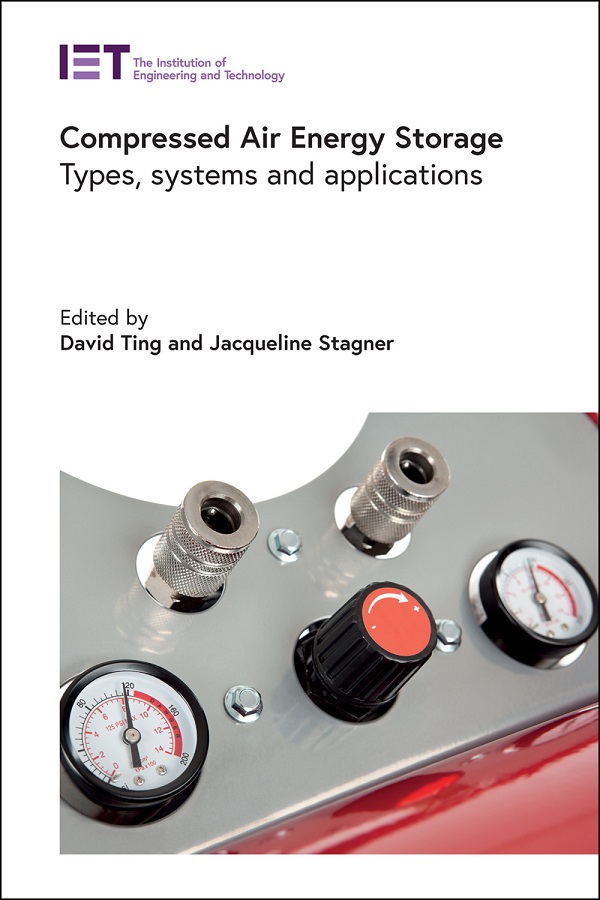- Agricultural Engineering and Technology
- Applied Physics
- Built Environment
- Computing and Networks
- Control, Robotics and Sensors
- Electrical Regulations
- Electromagnetics and Radar
- Energy Engineering
- Healthcare Technologies
- History and Management of Technology
- IET Codes and Guidance
- Manufacturing
- Materials, Circuits and Devices
- Model Forms
- Security
- Telecommunications
- Transportation

Compressed Air Energy Storage
Types, systems and applications
Edited by David S-K. Ting, Jacqueline A. Stagner
The intermittency of renewable energy sources is making increased deployment of storage technology necessary. Technologies are needed with high round-trip efficiency and at low cost to allow renewables to undercut fossil fuels. The cost of lithium batteries has fallen, but producing them comes with a substantial carbon footprint, as well as a cost to the local environment.
Compressed air energy storage (CAES) uses excess electricity, particularly from wind farms, to compress air. Re-expansion of the air then drives machinery to recoup the electric power. Prototypes have capacities of several hundred MW. Challenges lie in conserving the thermal energy associated with compressing air and leakage of that heat, materials, power electronics, connection with the power generator, and grid integration.
This comprehensive book provides a systematic overview of the current state of CAES technology. After an introduction to motivation and principles, the key components are covered, and then the principal types of systems in the order of technical maturity: diabatic, adiabatic, and isothermal. Experts from industry write about their experiences with existing major systems and prototypes. Economic aspects, power electronics and machinery, as well as special systems for offshore applications, are dealt with.
Researchers in academia and industry alike, in particular at energy storage technology manufacturers and utilities, as well as advanced students and energy experts in think tanks will find this work valuable reading.
About the Editors
David S-K. Ting is a professor in Mechanical, Automotive and Materials Engineering and the founder of the Turbulence & Energy Laboratory at the University of Windsor, Canada. His memberships include ASHRAE, ASME, and SAE. He has authored or co-authored more than 150 journal papers, 4 textbooks, and co-edited 14 books.
Jacqueline A. Stagner is a professional engineer, and the Undergraduate Programs Coordinator in the Faculty of Engineering at the University of Windsor, Canada. As an active member of the Turbulence & Energy Laboratory, she supervises students in sustainable energy and technologies, and has co-edited related books.
Publication Year: 2021
Pages: 285
ISBN-13: 978-1-83953-195-8
Format: HBK
